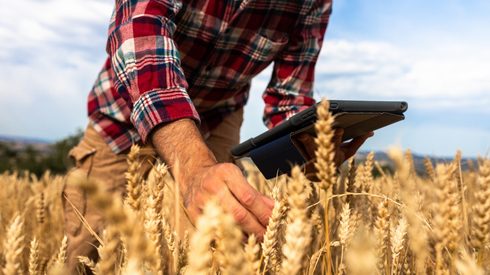The European cartonboard market continued its stall into a quiet Q1 amid low demand and supply ample enough that some producers, more so on the virgin-fiber than the recycled side, were still reportedly taking selective downtime to help manage their capacity.
While some folding boxboard (FBB) producers managed to begin the year by implementing increases of Euro 80-100/tonne on contracts that renewed in January, other producers who were more exposed to the wild swings in energy prices reduced their prices as energy surcharges became unnecessary and to keep pricing competitive. These movements, both upwards and down, occurred mostly within the existing range of the Fastmarkets cartonboard index, as the producers that increased prices did so from a lower level and those that lowered them were on the higher end due to the energy cost situation they were facing. Since then, FBB pricing has remained stable due in large part to the longer-term contracts which dominate the grade.
On the white-lined chipboard (WLC) side, prices continued to erode, falling by over Euro 100/tonne since the beginning of the year, as energy and paper for recycling (PfR) costs fell and demand remained very light.
FBB destocking slow and ongoing
The year began with the destocking of the supply chain still top of mind for market players and order books quiet as a result. “We will need to wait until spring to see where demand is for folding boxboard,” one converter said, acknowledging that the huge stocks in the supply chain were making demand visibility difficult.
One converter in January reported that although baseline growth was projected to be flat for 2023, new product development due to plastic replacement was expected to drive overall growth for the year by 3-5%, which he revised to 3% by the time March rolled around. “We still see strong demand toward plastic replacement,” he said. “The pipeline is astronomical,” he added.
“We see new projects that were stopped over the last two years coming back now that availability is better,” a trader reported. Even so, this has not done a great deal to fortify the market. “But the market is so quiet, it is really crazy. Still, we knew that after two years [of stellar activity] it would happen,” he added.
This perspective was echoed by a number of his colleagues. “After the craziness of the last three years, we are going back to a normal level, but we do not know what that level will be yet,” one producer said.
The Finnish transport strike in February and March did not have a real impact on the movement of FBB volumes, contacts reported. “The strike was both very well planned and short,” a converter said. “There was no significant impact as FBB stocks had been prepared,” added a producer. “It did not tighten the market at all,” said another.
Amid the loose market, board from abroad continued to be noticed. “We are seeing a lot of Asian [FBB] supply at the moment,” said one producer, and a number of his peers agreed with the sentiment, especially with regard to the United Kingdom and southern European markets. Still, many buyers continued to voice reservations about the quality of the foreign board and as a result suggested that imported FBB will have difficulties selling given the abundance of European volumes on the market.
By the middle of February, it was becoming apparent that the “great destocking” was taking longer than the vast majority of contacts had expected. This sentiment was echoed time and again by both sellers and buyers in the following weeks and right up to the second half of March. “We thought that the market would recover during Q1,” said one converter. “Now, it is already March and we are talking about Q2,” he added.
“You hear remarks that make you realize the supply chain is still full,” a producer said at the beginning of March. “Still, consumer spending is better than anticipated but buyers are uncertain and saving,” he added.
We will never be back to the [cost] levels we once had. There are still a lot of people thinking we will.
Still, producers were bullish about keeping price levels where they are moving forward. “Although energy is down compared to the peak, at the end of the day, it is not only energy driving prices,” said a producer. “Raw materials like binders and starch are on a higher level. Salaries are up as well.”
WLC erodes amid low demand
“When I look around, I hope for a new pandemic,” said one forlorn producer sarcastically in assessing the meager WLC market at the beginning of the year. “January and February usually are not all that strong for us, and I am not expecting miracles. But hopefully our customers’ stocks are depleting,” he added.
As with FBB, a number of WLC producers also reported that existing stocks from 2022 were inhibiting demand and order books from filling up. And, as with the FBB side of the market, WLC players reported that destocking was taking longer than expected. “We were probably early in predicting when stocks would come down,” said one producer. “It is so quiet, it’s snoring, even,” a producer said in agreement. “It is still too quiet, and customers are still reporting big inventories. It is taking longer than expected to reduce them,” he added.
Players said they were doing their best to cope and hang on until they could see light at the end of the tunnel. “We are trying to hold on here until the best time of the year starts [and demand picks up], typically in March and April,” a producer said. “Reducing pricing will not give us more volume,” he added, and a number of his colleagues echoed this sentiment. “It does not [bring any benefit] to bring prices down. What is the point if it does not bring orders?” asked a converter.
Demand will increase when stocks are under control.
Private label business was said to be doing extremely well, due in part to consumers monitoring their spending more carefully in the inflationary environment. “Private labels are asking for extra volumes, and they are not pushy on price,” reported one producer. As a result, packaging for the more expensive products was said to be remaining in the supply chain, clogging it up.
In March, Weig Karton announced that it had acquired German WLC producer Buchmann Karton. Few other details were made publicly available at the time of the announcement due to the deal being under regulatory review. Last year, Buchmann announced that it was planning to increase capacity at its mill from 280,000 tonnes/yr to 400,000 tonnes/yr.
Ample revamps in progress and capacity hikes to come
A number of producers are also at various stages of carrying out plans to increase capacity and improve WLC and FBB production. Some of these projects are ongoing now while others are still in the early stages of planning and would not begin production until much later this decade.
MM Board & Paper announced in January that a stack of modernization projects at its Neuss, Frohnleiten and Kolicevo mills would take place over the course of this year. The company successfully started up BM 3 at Frohnleiten after the rebuild, which reduced energy consumption and increased capacity and quality, and last week announced that the modernization of BM 5 at Neuss had begun. The Kolicevo modernization is scheduled to take place in August and September.
Metsä Board announced last year that it would increase capacity at its Husum mill by 200,000/yr with a rebuild of BM 1. Before the revamp, the machine produced 400,000 tonnes/yr and it is being ramped up now. Euro 210 million is being invested in the project, which is expected to see BM 1 reach the full new capacity in 2025. Metsä Board announced in January that it had begun an environmental impact assessment for a new FBB mill in Kaskinen, Finland, which would have a capacity of some 800,000 tonnes/yr. An investment decision is expected next year at the earliest.
Elsewhere, Stora Enso intends to convert the idle PM 6 at Oulu to produce 750,000 tonnes/yr of FBB and coated unbleached kraft paper by 2025, an investment of Euro 1 billion.
This article was first published in our PPI Europe newsletter. Find out how you can access the latest market developments in Europe directly from your inbox by speaking to our team.





